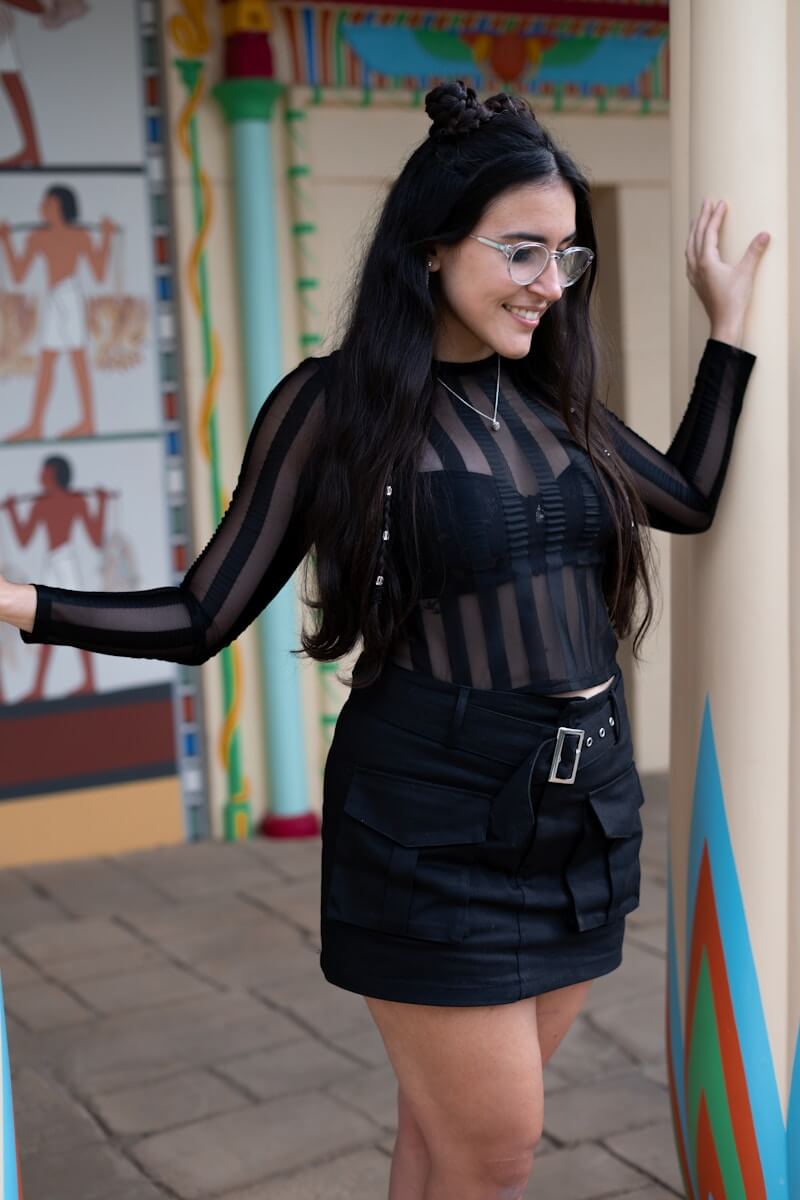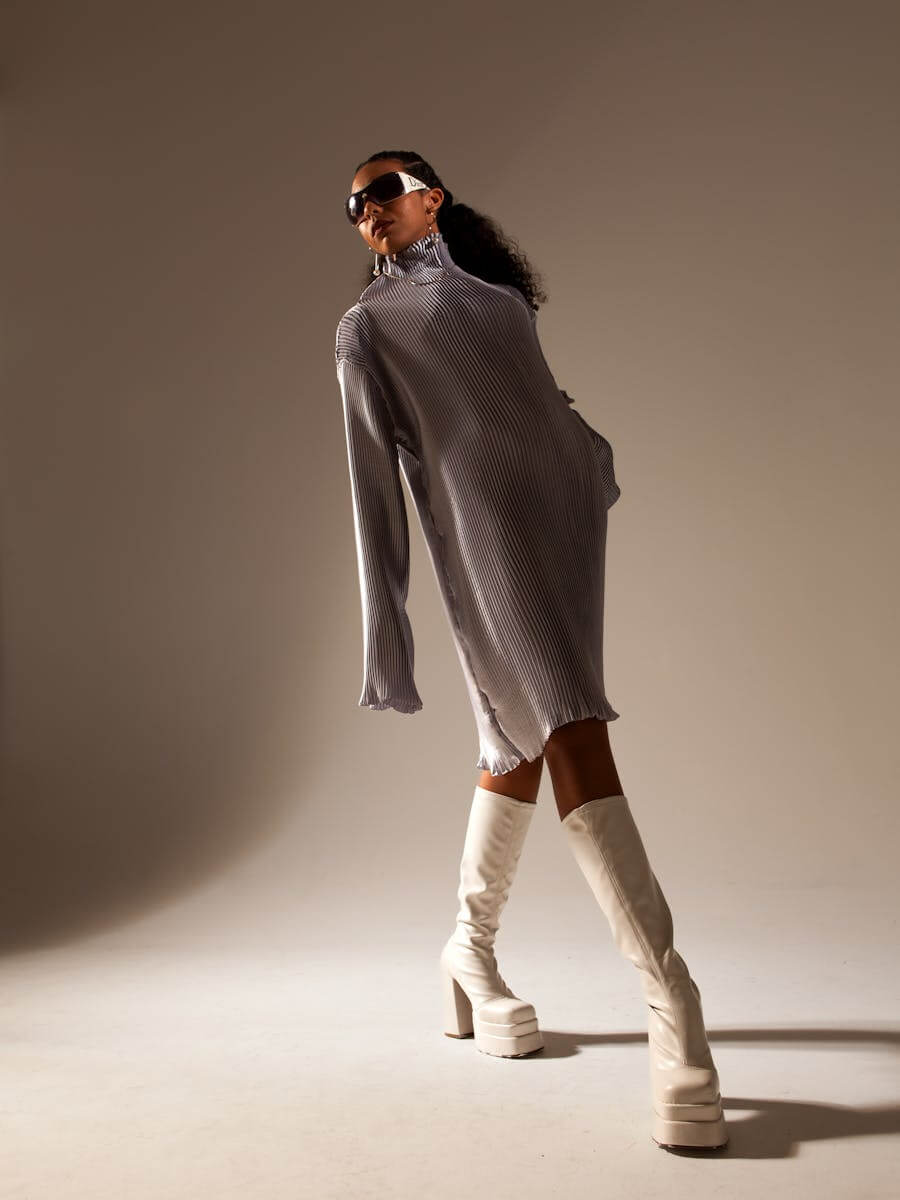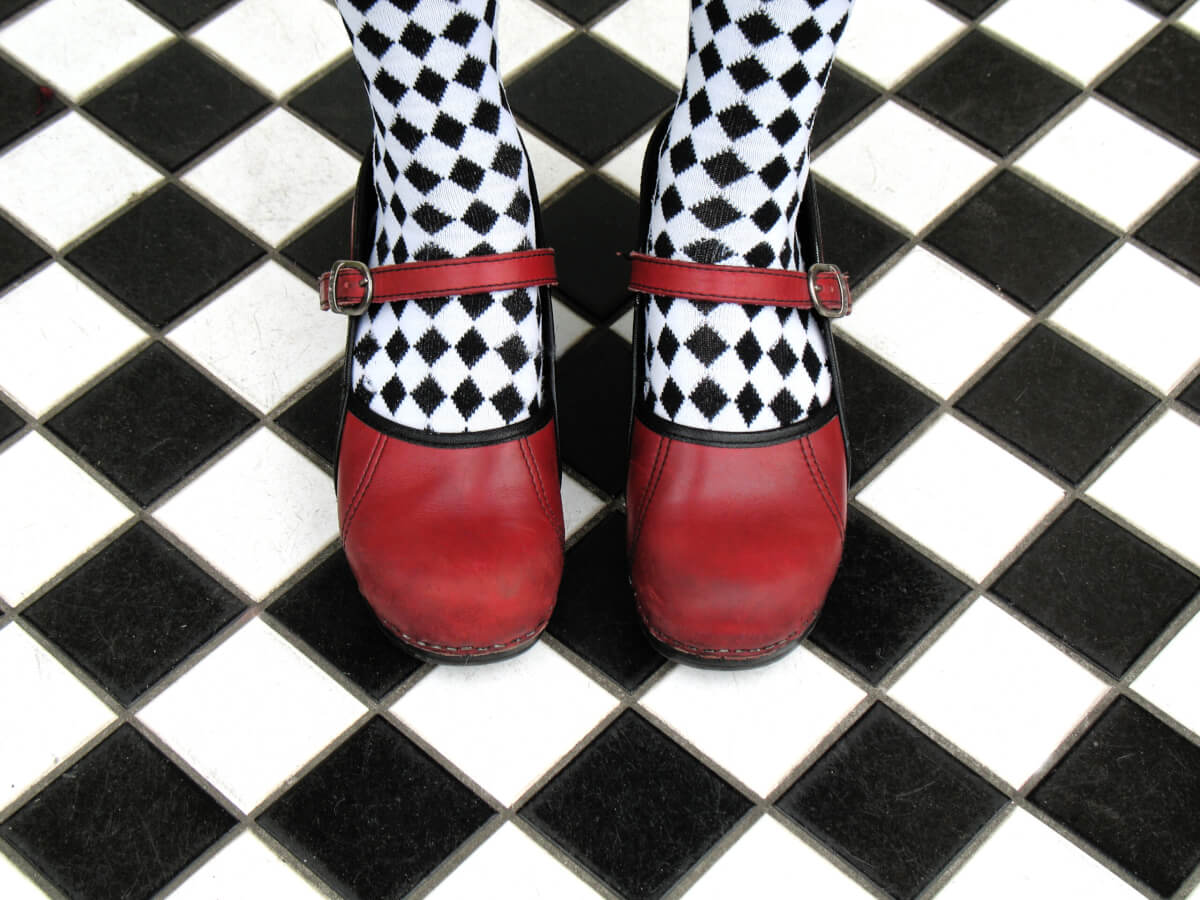The ’60s are known as a decade of forward thinking and were leaps ahead in culture, including fashion. The best fashion trends of the ’60s were marked by bold color blocks and prints, liberating hemlines, and futuristic styles meant to break boundaries and catch the eye. You can still find many of these trends that have stuck around or are being recycled in modern fashion, like the iconic mini skirt or flared jeans. The way that people dressed in the ’60s was a direct expression of the way social norms were changing at the time.
Without the ’60s, we would not wear knee-high boots, leopard print, or even patterned tights. However, the most iconic fashion trend from the era is probably the miniskirt. Even a survey of 2,000 people in the United Kingdom named the miniskirt the most iconic fashion trend in history, beating out even the little black dress. If you’re curious about the best 1960s fashion trends, keep reading to find out! StudyFinds searched the web and found 10 different expert sources to come away with the top seven most recommended fashion trends from the 1960s. Some of these styles you might recognize or even own. Let us know which trends you plan on wearing in the comments below.
➡️ How Our “Best Of The Best” Lists Are Created
StudyFinds’ “Best of the Best” articles are put together with the idea of taking the work out of common consumer research. Ever find yourself searching for a product or service on Google and reading multiple reviews to find items listed across many of them? Our Best of the Best lists are created with that process in mind, with each item ranked by how frequently it appears on expert reviews or lists. With Best of the Best, you are getting consensus picks — making them truly the best of the best!
The List: Best Fashion Trends from the ’60s, According to Experts
1. Miniskirts

Mary Quant, a British fashion designer, is often credited with popularizing the miniskirt. This classic skirt became a representation of the forward thinking and beginning of women’s liberation in the ’60s.
This garment broke away from traditional styles with its much shorter length, writes The Trend Spotter. This boldness caused controversy, surprising conservative circles. The miniskirt became a symbol of rebellion against conformity, allowing women to showcase their legs in a way that had not been seen before.
Besides Quant, other designers like Yves St Laurent and André Courrèges began putting shorter skirts on their runway models. There was even a protest at Dior’s 1966 show when they didn’t feature any miniskirts on their runway. The rise of the miniskirt wasn’t just a fashion trend, explains Hello Magazine; it reflected a broader cultural shift. As women embraced the miniskirt, they were also claiming more control over their sexuality. This new freedom wasn’t without its challenges. The amount of leg revealed by the miniskirt demanded a certain level of confidence, as it pushed boundaries and challenged traditional expectations.
Miniskirts are easy to style for a chic look. Pair them with knee high boots for an eye-catching look or a blazer and tights for a preppy vibe. Once a source of controversy, the miniskirt is making a strong comeback in the fashion world, Marie Claire reports. To create stylish looks, pair your miniskirt with opaque tights and classic ballet flats for a more feminine vibe or switch it up with socks and loafers for a cool and casual feel.
2. Go-Go Boots

The original go-go boots were mid-calf and white, with a low heel and square toe. But its characterization gradually evolved to include other styles of boot with a block heel and square toe. Interestingly, the go-go boot’s style translates well to modern fashion, making it a footwear choice that easily bridges the gap between decades, writes Byrdie.
The name “go-go” refers to “go-go dancers” who were employed in nightclubs or other venues and went on to define the free spirit of the ’60s. While the style saw a revival early in the decade thanks to designers like Beth Levine and André Courrèges, it was Courrèges’ specific vision that cemented the go-go boot’s iconic status, says Country & Townhouse. His design featured a clean and modern look – white, low-heeled, mid-calf with a square toe – and is often the image that comes to mind when we hear the term today. However, the go-go boot wasn’t limited to this singular style. As the decade progressed, designers experimented with bolder colors and explored different leg lengths, offering a wider variety for fashion enthusiasts.
You can still find go-go boots today in vintage fashion and all different variations of knee-high boots in the mainstream. The continued popularity of white shoes and boots is through pop culture icons and the enduring style of go-go dancers, claims Who What Wear. Singers like Nancy Sinatra, with her hit song “These Boots Are Made for Walkin’,” helped solidify white footwear as a fashion staple.
3. Mod Fashion
Mod fashion was a subculture that started in London in the ’50s and took off around the world in the ’60s. Centered around the free-spirited, jazzy nature of the ’60s, it included bold colors with out-of-the-box patterns combined with sleek silhouettes. This subculture established the distinct style, often referred to as the “London look,” which has left an undeniable mark on fashion, according to The Trend Spotter. Even today, echoes of the mod aesthetic can be found in modern clothing trends.
Much of mod fashion was inspired by modern art. Clothing stores and boutiques turned into hip places full of the younger generation. The mod style drew inspiration from Italian and French fashion. It embraced clean lines and simple shapes, like in the geometric dresses you often picture when thinking of the era’s fashion. This youthful and energetic aesthetic perfectly captured the spirit of the “swinging sixties” in London, particularly on the iconic Carnaby Street, which became synonymous with the mod movement, writes Fashion Gone Rogue.
Besides clothing, makeup styles of the era also changed, becoming more pronounced and bold, as if to proclaim women were taking charge of their looks like an art piece. Mod fashion wasn’t just a fleeting trend; it was a full-fledged cultural movement, explains Country & Townhouse. As the name suggests (“Mod” being short for modernist), it represented a rebellion against the conservative styles of the 1950s. Color palettes were often daring, utilizing monochromatic looks or eye-catching primary colors. Additionally, mod silhouettes were minimalist and drew inspiration from a futuristic aesthetic, creating a look that felt cutting-edge for its time.

4. Shift Dresses
Shift dresses are designed where the material falls in a straight line from the shoulders to the bottom of the dress with darts around the bust for shape. According to Cosmopolitan, the shift dress as a refreshing change from the restrictive styles of the past. Prior to the 1960s, A-line dresses with fitted bodices dominated fashion. The breezy shift dress, introduced in the ’60s, offered a welcome contrast. This looser, more comfortable silhouette reflected a broader cultural shift towards more relaxed styles.
The style was also a personification of the changing mindset of the ’60s, with women gravitating toward silhouettes and clothing that were less restricting and allowed more freedom to dance or move while still providing an air of elegance. A specific type of shift dress that evokes the 1960s vibe particularly well. While shift dresses have remained popular throughout the years, it’s the A-line silhouette with a shorter hemline that truly captures the essence of the sixties, explains Harper’s Bazaar. Similar to their historical counterparts, these contemporary dresses often feature beautiful floral patterns and a higher neckline to create a balanced look despite the shorter skirt.
The shift dress was largely popularized by Jackie Kennedy and Audrey Hepburn in “Breakfast at Tiffany’s.” Byrdie says both this style and the babydoll dress define the era with their short, loose silhouettes that provided comfort and a stylish look. These dresses were trendsetters back then and continue to be versatile wardrobe staples even today, thanks to their breathable fabrics and fashionable design.

5. Psychedelic Prints
“Hippies” were people generally associated with the counterculture of the ’60s and ’70s, who rejected mainstream culture. Fashion took on unorthodox patterns and wild colors (this is where tie-dye came from!). Good Housekeeping. acknowledges the association between 1960s fashion and the counterculture movement heavily influenced by psychedelic drugs, suggesting that the era’s embrace of bold colors, swirling patterns, and neon accents might have been a bit excessive.
Psychedelic prints were largely inspired by visual hallucinations one would see when taking the drug LSD. While these visuals changed the boundaries of modern art forever, they translated directly into fashion, with clothing featuring kaleidoscopic prints and eye-catching color combinations, Country & Townhouse.
The patterns are still prominent today in rave and street fashion, and can be seen kept alive by some modern designers. Cult favorite House of Sunny offers trendy bodycon midi dresses that capture the essence of the era, adds Hello Magazine. Even established brands like Emilio Pucci pay homage to their heritage. The label’s founder, Emilio Pucci, was well-known for his geometric designs, earning him the nickname “The Prince of Prints.” This enduring legacy ensures that psychedelic influences remain a vibrant part of the fashion world.

6. Mary Janes

The Mary Jane was originally worn by young schoolgirls in the early 1900s, but eventually made their way into modern style. These shoes offered a practical advantage with their secure straps, but still retained a stylish look, mentions Byrdie. The classic design with its signature strap continues to inspire shoe designers today. Finding a good pair of Mary Janes remains a great way to add a touch of timeless style to any outfit, whether you’re running errands or dressing up for an evening out.
The Mary Jane shoe can come as a flat or a heel but is characterized by a round toe and a sensible strap to keep the shoe in place. The classic design continues to inspire modern takes. For instance, the Miu Miu runway show in February 2018 featured a trendy update on the Mary Jane silhouette – a super-high block heel and playful polka dots added a touch of contemporary flair to this timeless shoe, raves Cosmopolitan.
You can find Mary Janes everywhere today, in both traditional and modern variations with a higher, chunky heel. These shoes transcended specific subcultures during the 1960s. Popular with mods, bohemians, Beatniks, and even celebrities, Mary Janes offered a feminine look that fit right in with the era’s trends, says Country & Townhouse.
7. Babydoll Dresses
A more romantic version of the shift dress, babydoll dresses were still forgiving enough to allow freedom of movement but were more feminine in style. Defined by its dramatic sleeves, high empire waistline, and of course, the mini hemline, this dress was a favorite among fashion icons like Twiggy and Cher, says Harper’s Bazaar. The style continues to inspire designers today. Brands like Selkie have built their entire aesthetic around these ultra-feminine dresses, while others like Staud offer updated takes with modern twists like cutouts and longer hemlines, ensuring the silhouette stays relevant for a contemporary audience.
The babydoll dress was another symbol of feminism, freeing women from the constraints of corsets and long lengths. The credit for naming this style is attributed to the 1956 movie “Babydoll,” where actress Carroll Baker wore a short-sleeved, ruffled version of the dress, explains Hello Magazine.
Babydoll dresses still pop up every so often on high fashion runways and though they aren’t currently trending, many dresses often take inspiration from the flowy silhouette and delicate detailing. Popularized by young mods, it became a symbol of rebellion against the more structured and corseted silhouettes of the 1950s. This shift in fashion choices reflected the changing times and a desire for more carefree clothing, notes Who What Wear.
You might also be interested in:
Sources:
- The Trend Spotter
- Hello Magazine
- Marie Claire
- Byrdie
- Country & Townhouse
- Who What Wear
- Fashion Gone Rogue
- Cosmopolitan
- Harper’s Bazaar
- Good Housekeeping
Note: This article was not paid for nor sponsored. StudyFinds is not connected to nor partnered with any of the brands mentioned and receives no compensation for its recommendations. This article may contain affiliate links in which we receive a commission if you make a purchase.


Hook up